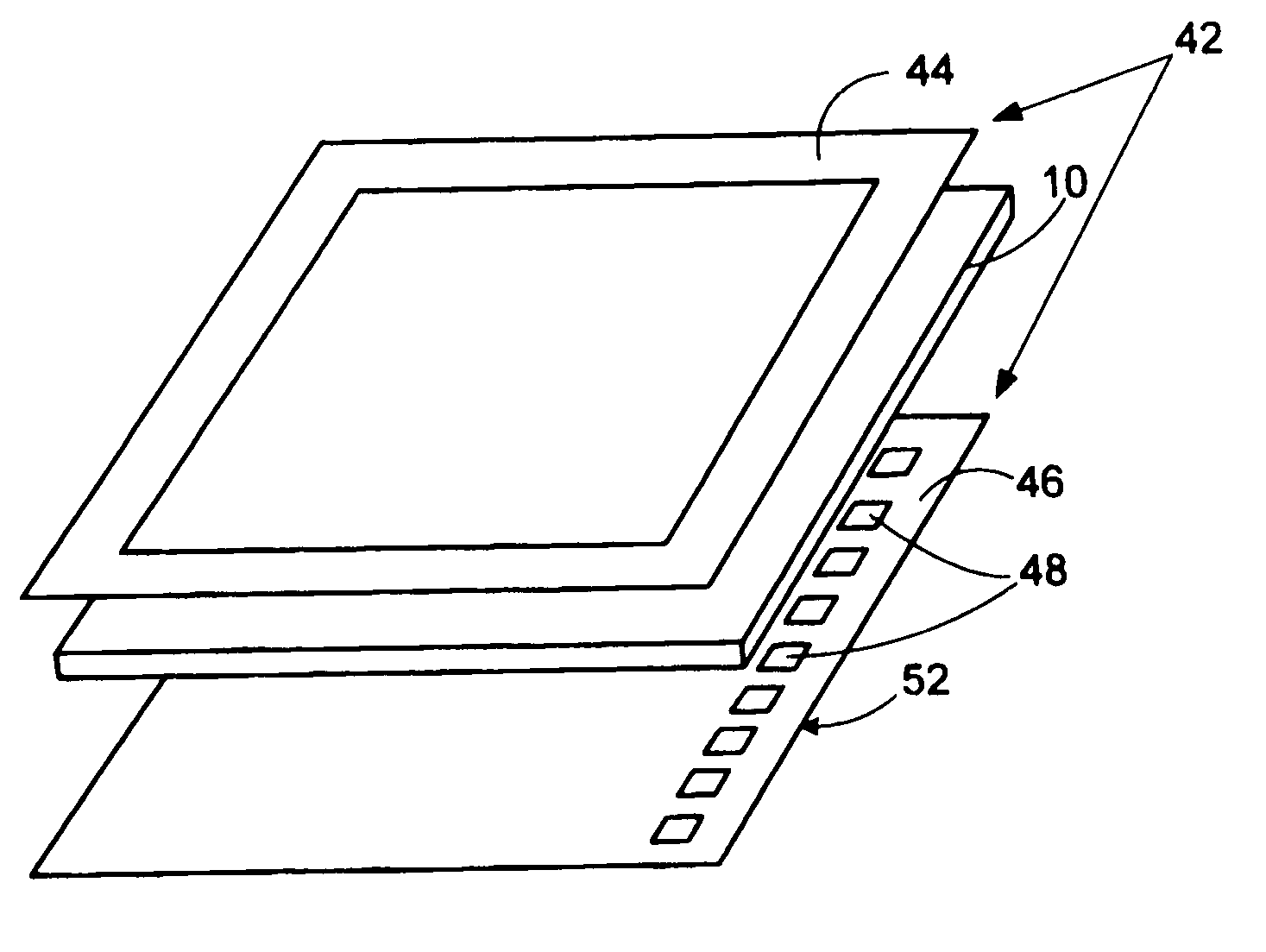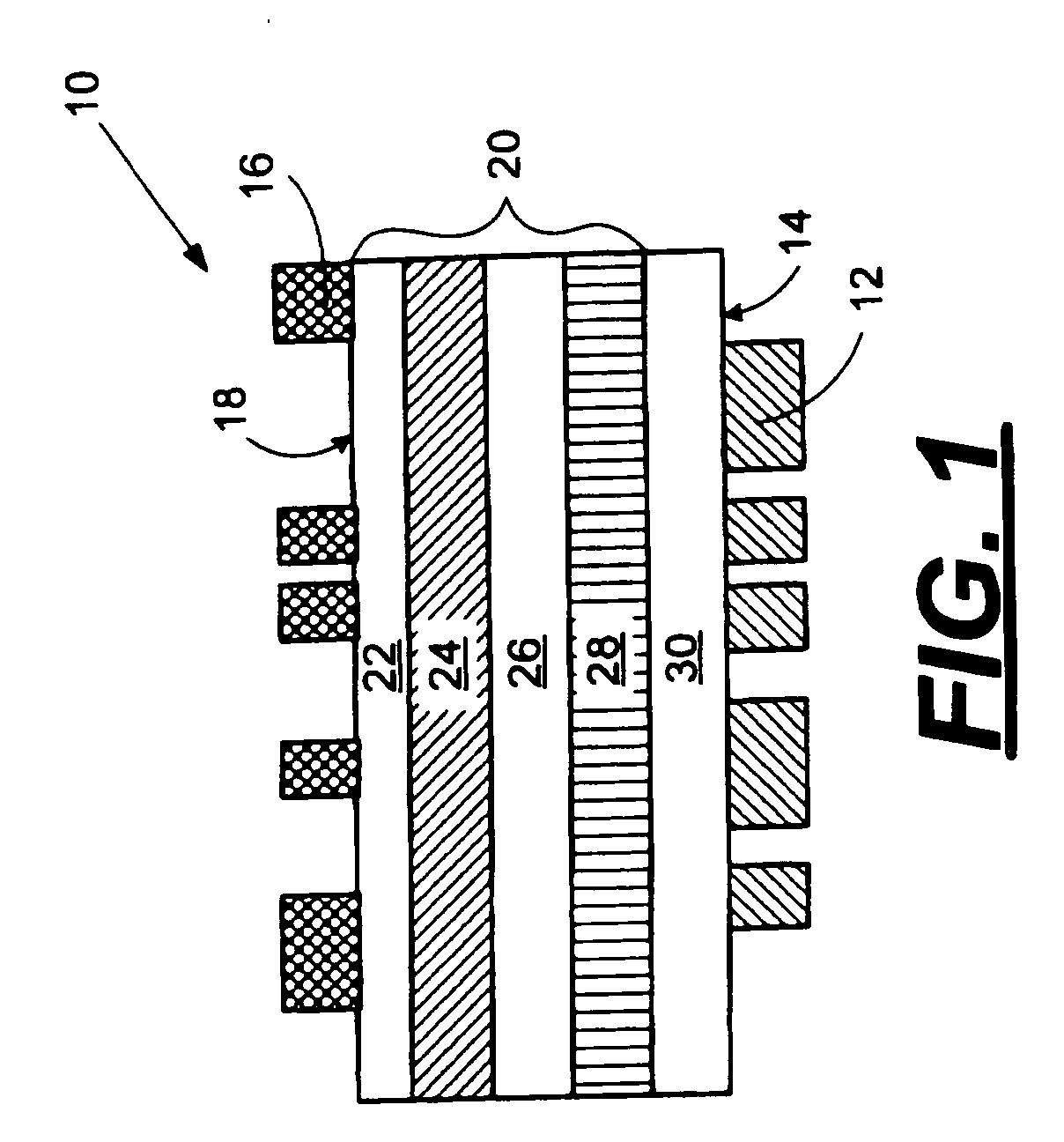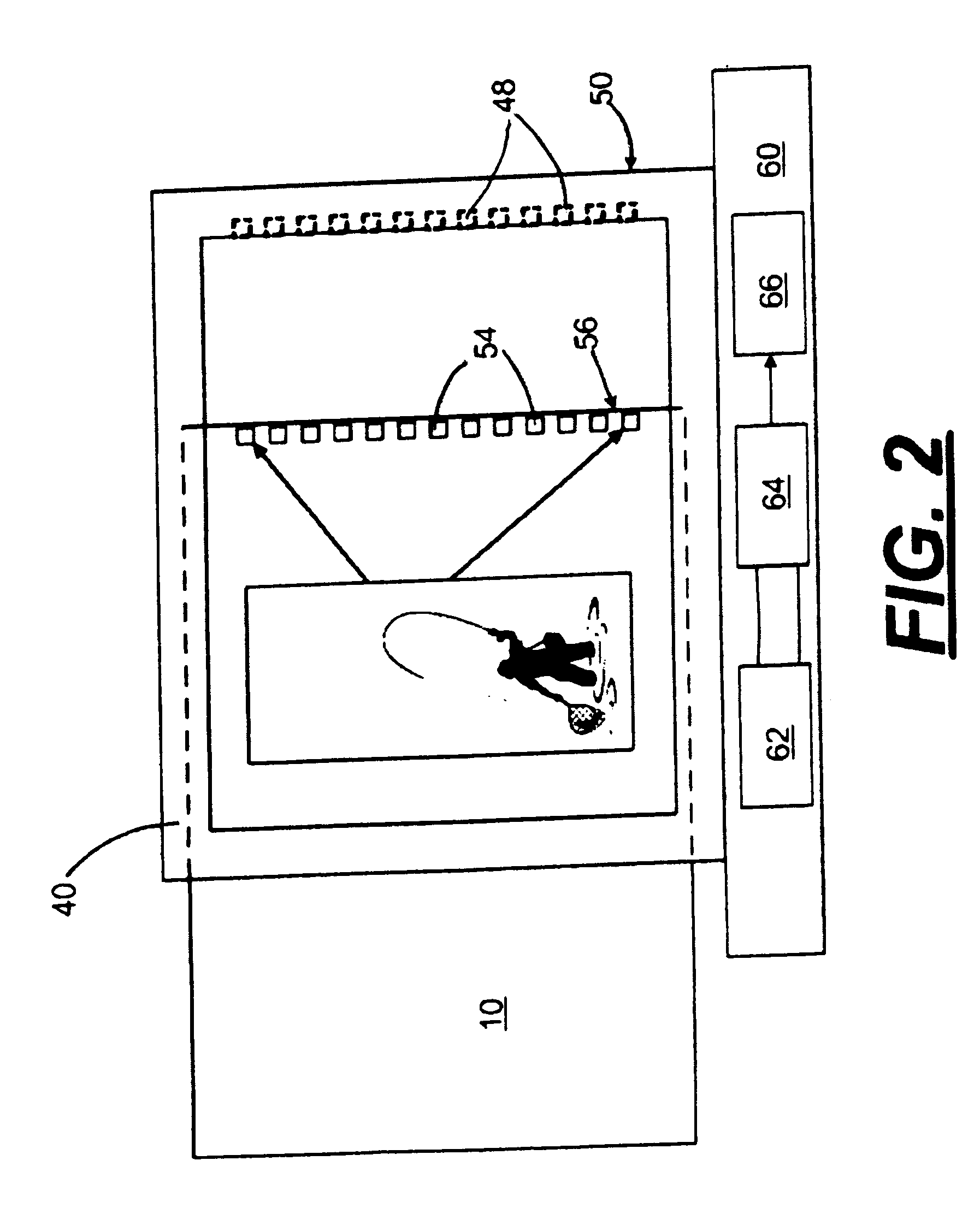Electroluminescent display system
- Summary
- Abstract
- Description
- Claims
- Application Information
AI Technical Summary
Benefits of technology
Problems solved by technology
Method used
Image
Examples
Embodiment Construction
[0015] As described in more detail below, one embodiment of the disclosure provides a system and method for providing improved EL signage and display systems. A pattern(s) may be printed on an EL substrate to provide, for example, a customized sign or display that is receivable into a separate frame (which might also be referred to, in some embodiments, as a sign or display holder). The pattern(s) may correspond to encoded information that enables a controller in the display holder to selectively illuminate portions of the sign. Since the system enables interchangeability of signs with the holder, a number of different signs may be used with a single sign holder enabling a user to quickly change the sign and its display options.
[0016] With reference to FIG. 1, there is provided a cross-sectional view of an EL signage 10 including an image pattern 12 printed adjacent (e.g., on) a first surface 14 thereof and a conductor pattern 16 printed adjacent (e.g., on) a second surface 18 ther...
PUM
 Login to View More
Login to View More Abstract
Description
Claims
Application Information
 Login to View More
Login to View More - R&D
- Intellectual Property
- Life Sciences
- Materials
- Tech Scout
- Unparalleled Data Quality
- Higher Quality Content
- 60% Fewer Hallucinations
Browse by: Latest US Patents, China's latest patents, Technical Efficacy Thesaurus, Application Domain, Technology Topic, Popular Technical Reports.
© 2025 PatSnap. All rights reserved.Legal|Privacy policy|Modern Slavery Act Transparency Statement|Sitemap|About US| Contact US: help@patsnap.com



